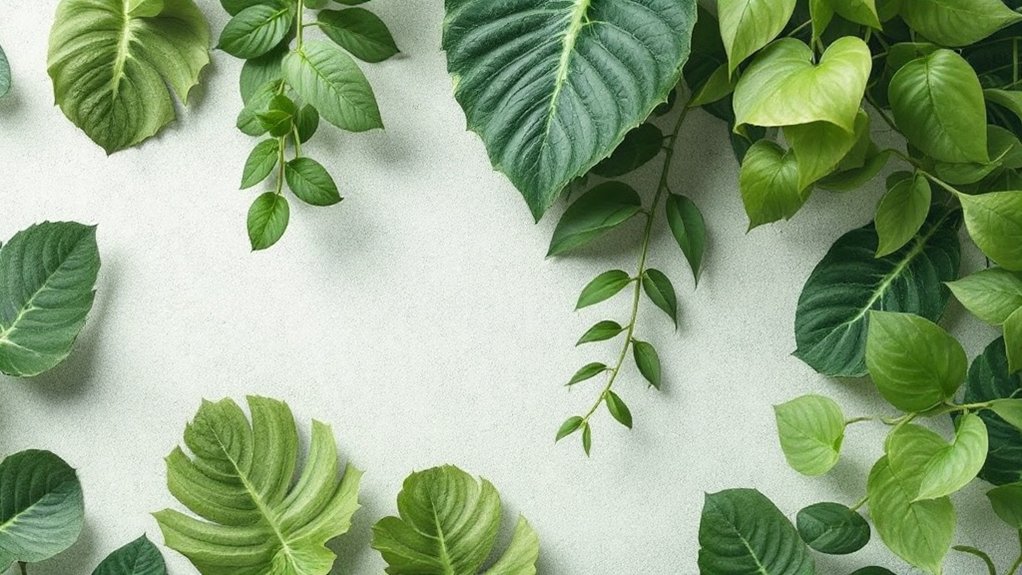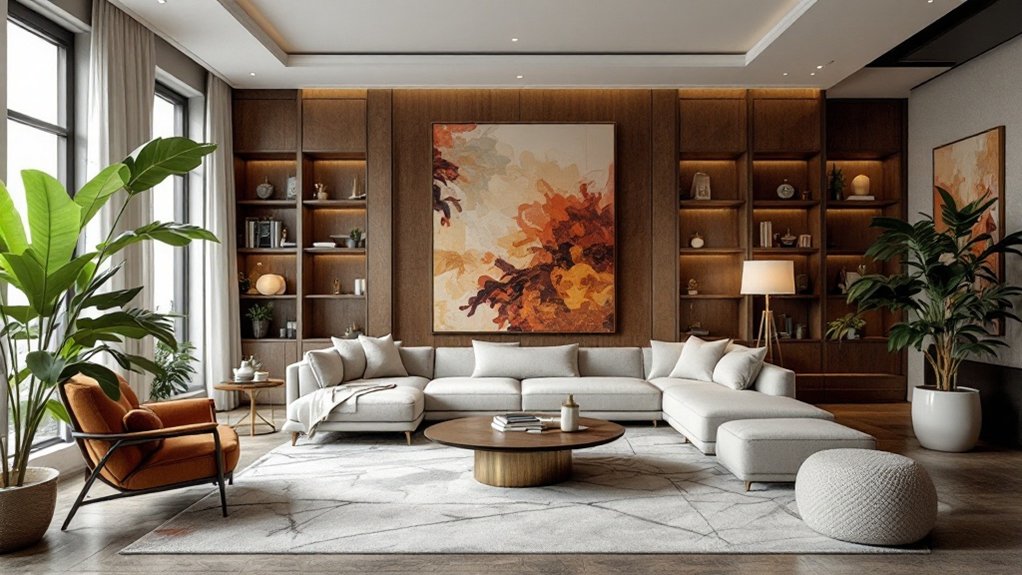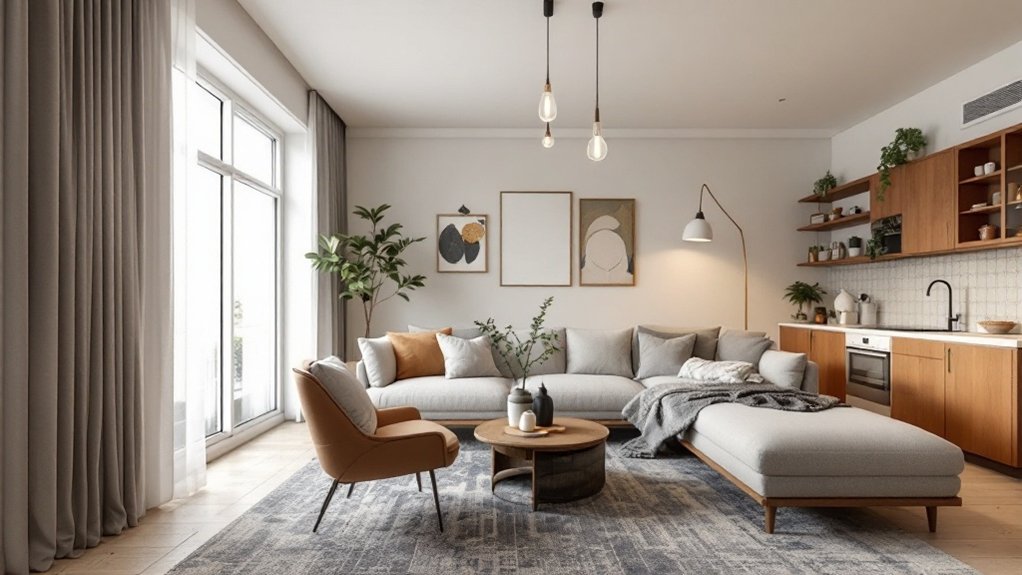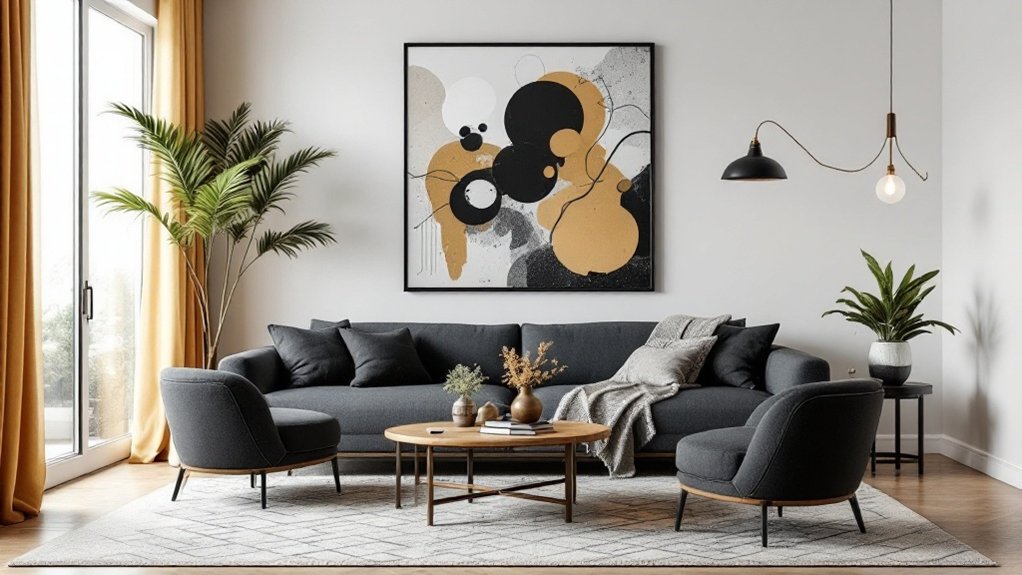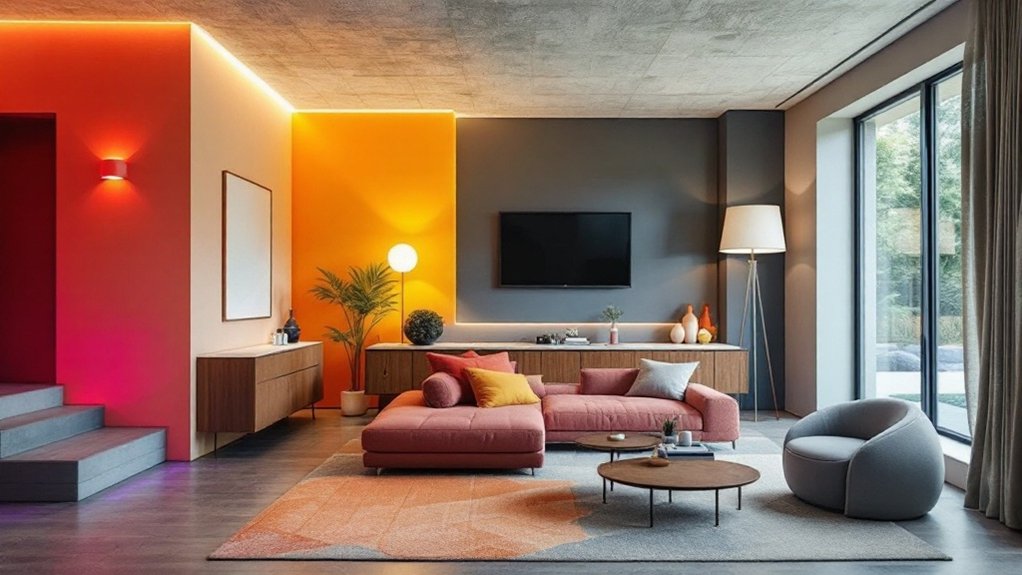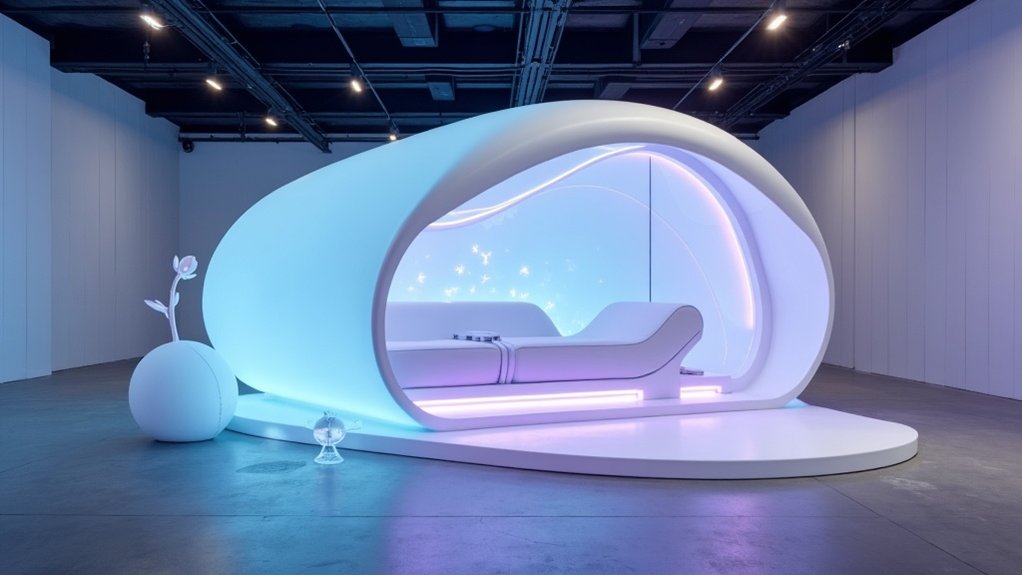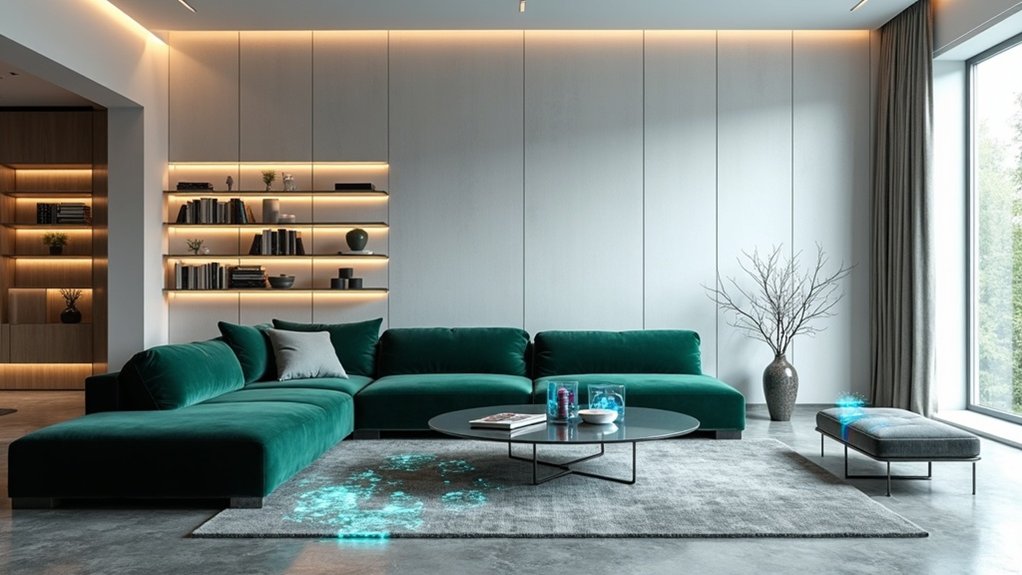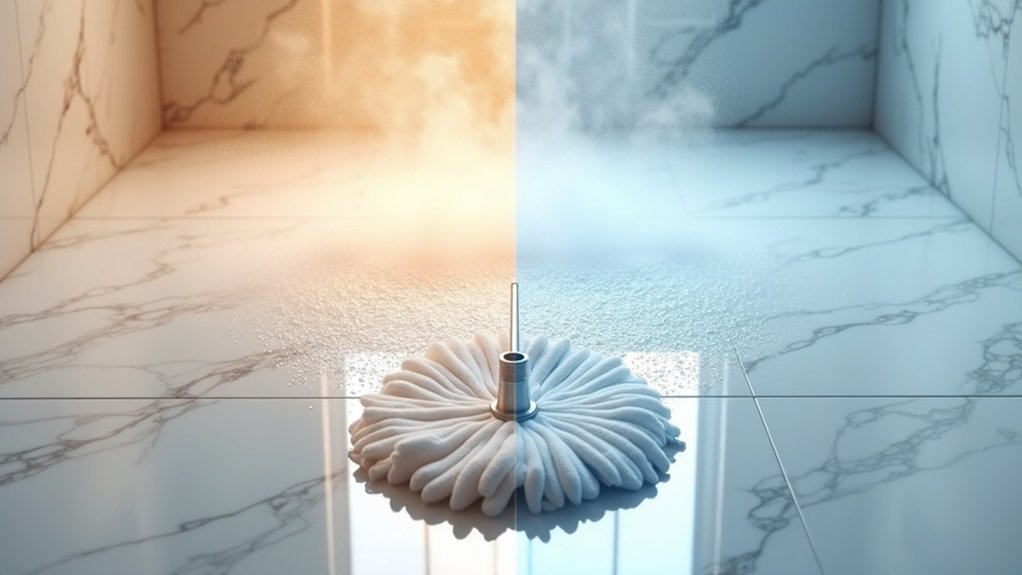Creating statement greenery centerpieces requires thoughtful plant selection and strategic arrangement techniques. Low-maintenance options like succulents and air plants work well in modern ceramic or glass containers, while ferns and moss add lush textures in traditional vessels. Varying heights and incorporating complementary elements like stones creates visual depth, while proper maintenance guarantees longevity. From hanging displays to grouped arrangements on rotating trays, plants offer versatile solutions for those seeking to improve their interior focal points.
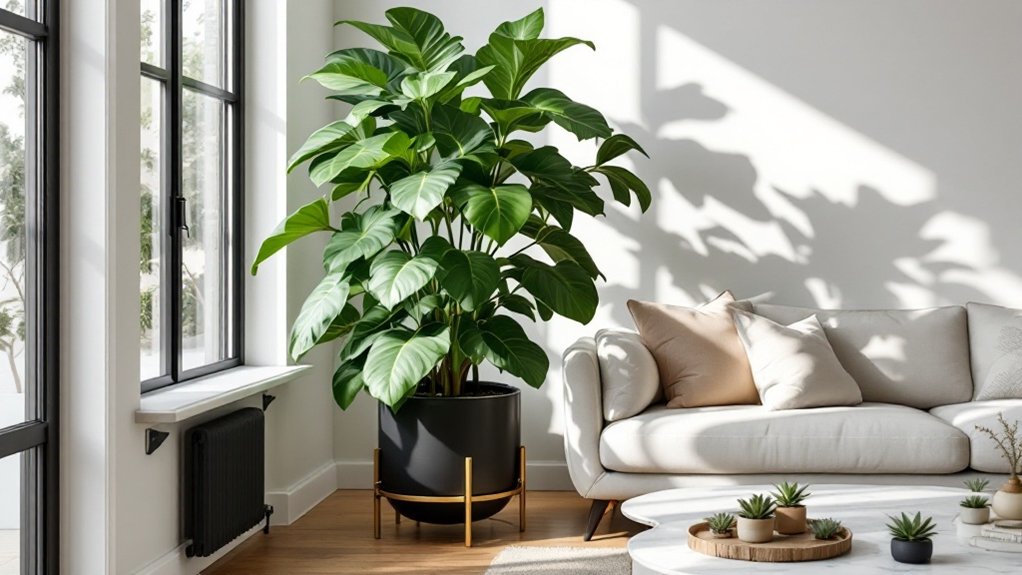
Natural elegance meets functional design in the art of creating interior centerpieces with plants, offering homeowners a versatile way to bring life and visual interest to their living spaces. The growing trend of incorporating live plants into home decor has evolved beyond simple potted arrangements to sophisticated displays that serve both aesthetic and practical purposes.
When selecting plants for centerpieces, versatility and maintenance requirements play essential roles in the decision-making process. Ferns and moss provide lush, verdant textures that instantly improve any room's ambiance, while succulents and air plants offer low-maintenance alternatives for busy households. Beautiful potted hydrangeas in shades of pink, blue, or white create stunning seasonal focal points. Herb plants like rosemary and basil create aromatic displays that double as functional kitchen gardens, combining beauty with practicality. Beautiful living orchid plants, available for around $10 at many retail stores during spring, offer an affordable yet elegant centerpiece option.
The choice of containers significantly impacts the overall aesthetic of plant centerpieces. Raw terra cotta vessels deliver a rustic, earthy appeal, while sleek ceramic planters complement modern interiors. Glass containers that showcase plant roots add an unexpected element of visual interest, and hanging planters maximize vertical space while creating dynamic focal points.
Successful plant arrangements often incorporate varying heights and textures to create visual depth. Designers frequently combine multiple small potted plants on decorative trays or lazy Susans, allowing for easy rotation and adjustment. The addition of complementary elements such as decorative stones, shells, or carefully placed candles can improve the overall composition without overwhelming the natural beauty of the plants.
Beyond their aesthetic appeal, live plant centerpieces offer numerous practical benefits. These living arrangements purify indoor air and maintain ideal humidity levels while providing a sustainable alternative to cut flowers. As seasonal decorating options evolve throughout the year, plant centerpieces can be easily adapted by incorporating plants with seasonal characteristics, from spring blooms to autumnal foliage.
Maintaining these living centerpieces requires consistent care and attention. Regular watering, periodic pruning, and occasional fertilization guarantee the longevity of these displays. With proper maintenance, plant centerpieces can serve as enduring focal points that grow and evolve with their environment, creating lasting impact in any interior space.
Frequently Asked Questions
How Do I Protect My Pets From Potentially Toxic Indoor Plants?
Pet owners can protect their animals from toxic indoor plants through several key strategies.
Researching and identifying hazardous varieties using ASPCA's thorough database should precede any plant purchases.
Placing potentially dangerous specimens in inaccessible locations, using deterrent sprays, and training pets with positive reinforcement help prevent accidents.
Furthermore, maintaining vigilant observation for signs of plant tampering and keeping emergency veterinary contacts readily available guarantees swift response if exposure occurs.
What Plants Thrive in Bathrooms With Limited Natural Light?
Several plants thrive in bathrooms with limited natural light. The ZZ Plant and English Ivy demonstrate exceptional resilience in low-light conditions while purifying the air.
Philodendron species adapt well to artificial lighting and high humidity, though they may require occasional rotation.
For additional options, ferns, Calatheas, and Peace Lilies flourish in steamy bathroom environments, while the Whale Fin Sansevieria tolerates minimal light and infrequent watering schedules.
Can Statement Plants Affect Indoor Humidity and Air Conditioning Efficiency?
Statement plants can certainly influence indoor humidity through transpiration, releasing between 35-58g of vapor daily depending on the season.
While this effect is measurable in rooms with low air exchange, modern HVAC systems typically compensate for any humidity variations.
Large, leafy species like Epipremnum contribute more vapor than succulents, but their impact on air conditioning efficiency is minimal in well-ventilated spaces with proper climate control systems.
How Often Should I Rotate Large Plants for Even Growth?
Large plants should be rotated every 7-14 days to guarantee even growth and balanced light exposure.
Horticulturists recommend coordinating rotation with regular watering schedules for consistent care.
Using plant turntables or dollies promotes easier movement of heavy specimens while minimizing root disturbance.
For best results, plants should be turned approximately 90 degrees each time, allowing all sides to receive adequate light throughout the month.
Rotation frequency may need adjustment based on specific light conditions and plant species.
Which Indoor Plants Are Best for Improving Air Quality Naturally?
Based on NASA's extensive research, several houseplants excel at natural air purification.
The Snake Plant (Sansevieria trifasciata) stands out for its unique nighttime oxygen production and removal of multiple toxins.
Peace Lilies and Money Plants effectively filter formaldehyde, benzene, and other common pollutants.
Boston Ferns, while requiring more maintenance, are particularly effective at removing formaldehyde and xylene.
These plants not only purify air but likewise thrive in typical indoor conditions.
